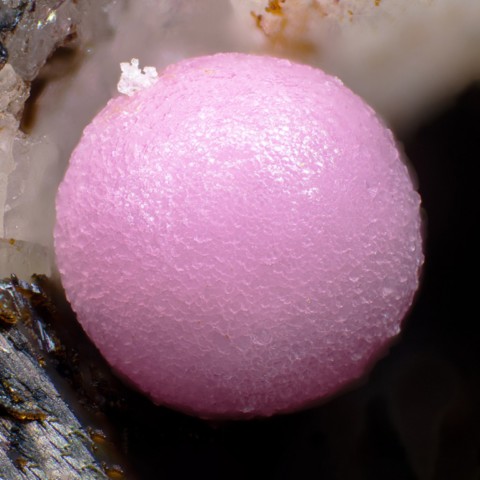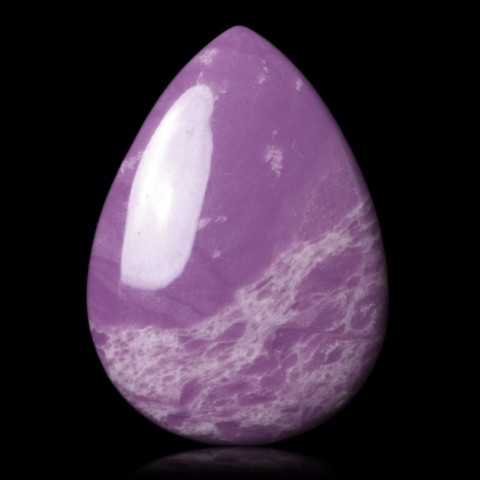PHOSPHOSIDERITE
Class : Phosphates, arsenates, vanadates
Subclass : Hydrated phosphates
Crystal system : Monoclinic
Chemistry : FePO4 2H2O
Rarity : Fairly common
Phosphosiderite is a secondary phosphate of granitic pegmatites, more rarely a component of soils. It is the dimorph of strengite and probably forms a complete series with metavariscite. It owes its name to its chemical composition : phosphorus and iron (sideros in Greek). Phosphosiderite comes from the alteration of primary phosphates such as triphylite or lithiophyllite and usually accompanies other secondary phosphates (heterosite, leucophosphite, etc...). It forms tabular crystals with squat prismatic, more frequently encrustations or botryoidal masses with fibrous textures. The mineral is variable in color but often striking : purple, blue-violet to carmine red and pink, sometimes pinkish-orange or greenish, rarely colorless. It is a mineral that is cut into cabochons for jewelry, and used as an ornamental stone.
Main photo : Phosphosiderite from Bull Moose Mine, Custer, South Dakota, USA © Edgar Müller
Phosphosiderite in the World
Phosphosiderite in France
In France, phosphosiderite is reported in the pegmatite of La Vilatte and Pecout (Haute-Vienne) but also in Echassières (Allier) and in the pegmatite field of Collioure (Pyrénées-Orientales).
Twinning
Interpenetration twins on {101} are known.
Fakes and scams
No fake recorded for this mineral species.
Hardness : 3.5 to 4
Density : 2.76
Fracture : Irregular
Trace : White
TP : Translucent to transparent
IR : 1.692 to 1.738
Biréfringence : 0.046
Optical character : Biaxial -
Pleochroism : Visible
Fluorescence : None
Solubility : Hydrochloric acid
Magnetism : None
Radioactivity : None





